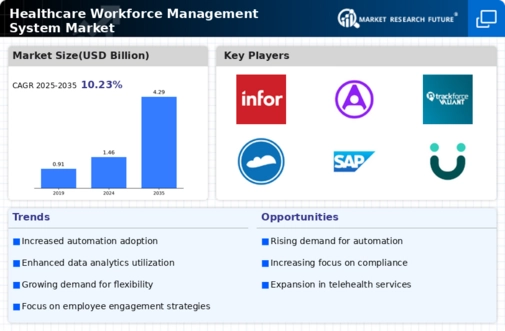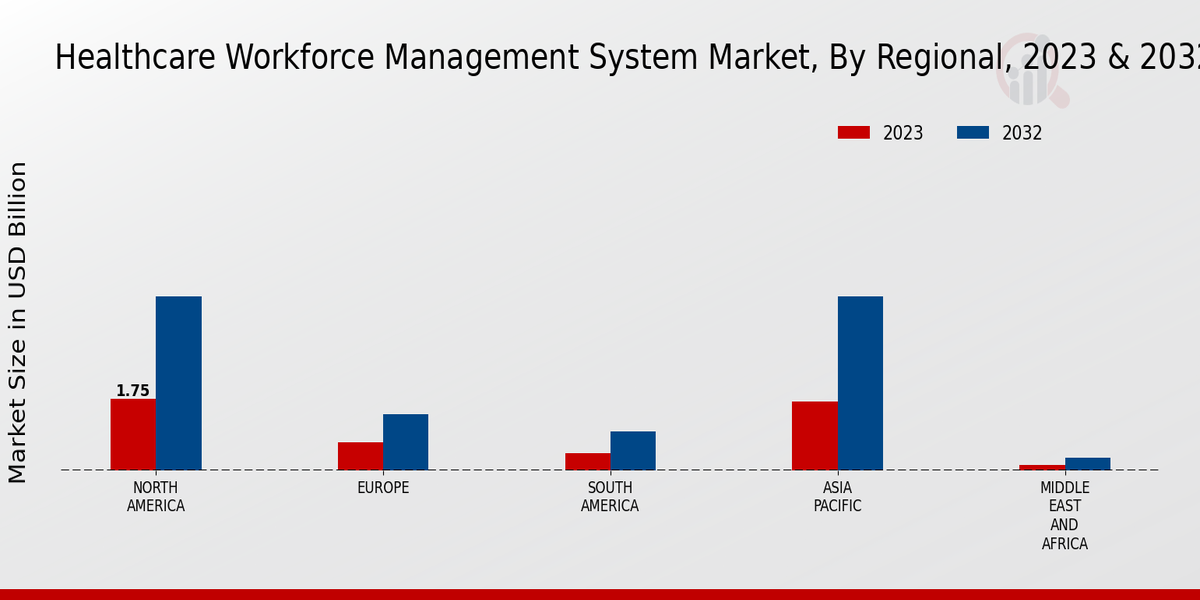The prime players in the Healthcare Workforce Management System Market are positioning their focus on the development of novel solutions that cater to the ever-changing dynamics of healthcare organizations. For this, the major players in the Healthcare Workforce Management System Market are making huge investments in research and development to enhance the prospects of their systems. The Healthcare Workforce Management System Market industry is experiencing the rollout of a whole new array of technologies, such as artificial intelligence and machine learning, that are being incorporated into workforce management systems that enhance the speed and accuracy with which they function.
The future period will indeed witness increased prospects of growth in the Healthcare Workforce Management System Market of the future.Kronos IncorporatedOne of the major players in the Healthcare Workforce Management System Market is Kronos Incorporated, which rolls out an entire sector of workforce management solutions that allow healthcare organizations to work towards improving their workforce, thereby leading to increased patient care. The primarily expected solutions of Kronos include workforce scheduling, time and attendance, absence and absence budget, and payroll, among others.
Kronos has established a massive presence in the global domain and has its services extended to a wide array of healthcare organizations including large hospitals, general and other specialty outpatient clinics, along with long-term care facilities.InforInfor is yet another major player in the Healthcare Workforce Management System Market that provides a workforce management suite through the cloud and is referred to as the Infor Workforce Management. Similar to its major competitor, Infor Workforce Management is also a complete suite of workforce management solutions that include workforce scheduling, time and attendance, absence budget, and payroll, among others.
The development of Infor workforce management is a major step taken to help the healthcare sector improve their workforce and, in the same regard, reduce the expenditure on the workforce. Infor’s services are also widely spread across the healthcare sector, which dominates service ranges, including hospitals, psychiatric hospitals, clinics, and long-term care nursing facilities, among others as well.





















